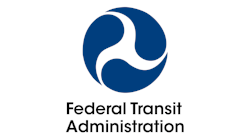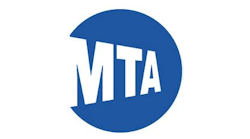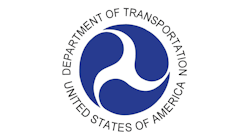OP-ED: Unspent FTA 2012 Hurricane Sandy relief funding Is disappointing
The U.S. Department of Transportation (USDOT) Office of Inspector General (OIG) announcement in May 2024 that they will initiate an audit of the Federal Transit Administration’s (FTA) unexpended Hurricane Sandy recovery, relief and resiliency grant funds is disappointing news.
According to the USDOT OIG, in January 2013, the FTA received $10.9 billion for the widespread damage Hurricane Sandy caused to transportation infrastructure when it hit the mid-Atlantic and Northeastern U.S. in October 2012. Of the $10.9 billion, FTA retained approximately $10 billion to obligate to grant recipients for Hurricane Sandy-related recovery, relief and resiliency programs. FTA has obligated just over 99 percent ($9.9 billion) of this funding to 16 total recipients.
As of March 2024, approximately $3.8 billion remains. In the years since Hurricane Sandy, other major events and legislative appropriations may have shifted recipients’ spending plans and priorities of FTA Hurricane Sandy funds. Further, the agency’s prior work identified concerns with FTA’s tracking and oversight of its Hurricane Sandy funds, including issues with timely recipient expenditure of the funds. Given the previous findings, the significant amount of time that has passed since Hurricane Sandy and the magnitude of dollars involved, they are initiating this audit to assess the status of FTA’s unexpended Hurricane Sandy funds.
Something is seriously wrong if, according to the USDOT OIG, there is a balance of $3.8 billion in $10.9 billion previously approved funding in FTA obligated grant recipients for Hurricane Sandy recovery, relief and resiliency programs. How many of the $3.8 billion projects are still not under contract or not yet completed. Why 11 years later is there still $900 million available that has not been obligated under approved grants to transit agencies?
The first wave of recovery and relief grants were to fund activities and capital projects to restore assets and services adversely impacted by Sandy. Given the high priority of these projects, 100 percent of all work should have been completed and in beneficial use within three years, or the end of 2015.
The second wave of grants, known as resiliency, were desired to prepare for future natural disasters. How many major storms have come and gone resulting in service disruptions with the New York Metropolitan Transportation Authority (MTA) and 15 other transit agency recipients subject to this audit over the past 12 years? Why wasn't 100 percent of this grant-funded work completed within the following three years between 2015 and the end of 2018? How many times in recent years have major storms resulted in adverse impacts of a transit agency's ability to maintain service? How many service disruptions could have been avoided if several billion in resiliency projects were completed and in beneficial use years ago?
Any recovery, relief or resiliency grant funded projects that could not meet these most reasonable timetables should have required recovery schedules for completion of work, including cash flow burn rates for drawdowns against open grants for reimbursement.
Of the $10.9 billion, $10.8 billion has been obligated under grants. If grantees were unable to convince FTA to obligate the remaining $99 million in available funding, clearly any projects 12 years later that could be funded using these funds were not a priority or essential to the functioning of the transit agencies in question. The FTA should consider returning the $900 million to the Treasury. They can either be repurposed to other more pressing needs or used toward reducing our $35.9 trillion and growing national debt.
If the FTA was doing its job, as I did when I was working there, many of these issues should have been previously raised at prior Quarterly Capital Program Progress Review Meetings, Quarterly Financial and Milestone Progress Reports, Project Management Oversight Monthly Reports, Triennial and other FTA independent consultant reviews.going back many years.
The MTA, New Jersey Transit (NJ Transit) and many of the other 14 transit agencies in question may not have had enough resources to integrate the implementation of all of the billions in annual FTA assistance, including:
- Formula Section 5307 Urbanized Area, Section 5337 State of Good Repair, Section 5309 Bus and Bus Facilities, along with others .
- Federal Highway Administration funding under several programs, including Congestion Mitigation Air Quality and Surface Transportation Program that can be transferred to FTA.
- 100 percent locally funded capital projects along with billions more in Hurricane Sandy Recovery, Relief and Resilience funding.
The MTA, NJ Transit and other FTA recipients with ongoing Hurricane Sandy funded capital projects may have lacked sufficient procurement, project managers, engineers, legal and force account employees, along with track outage availability (for those with subway or commuter rail) to proceed with all these projects in the same time frame.
Much of this analysis and review of a transit agency's technical capacity to spend all these additional funds would have occurred under my watch when serving as the FTA Region 2 Office of Operations and Program Management. Accountability of taxpayers funding was the watch word of the day. We would conduct Quarterly Capital Projects and Programs Progress Review Meetings with some of the largest recipients of funding in the region, including NJ Transit, MTA’s Office of Capital Construction (Capital Investment New Starts and Core Capacity projects), New York City Transit (the largest subway and bus operator in the U.S.), Long Island Rail Road (the largest commuter railroad in the U.S.) and Metro-North Rail Road (the second largest commuter railroad in the U.S.).
Medium sized bus operators would meet twice a year. All other smaller or one-time recipients of discretionary grants once per year. At these meetings, grantees would have to explain why any FTA funded projects were not yet awarded, force account (in-house staff) not already under way, behind schedule, over the original approved budget or subject to any contract change orders over $100,000. Recovery schedules, justification for cost increases and significant contract change orders had to be presented.
FTA Acting Administrator Veronica Vanterpool should not have waited many months for the USDOT OIG report, which to the best of my knowledge, has yet to be issued. Instead, several months ago she should have issued a Dear Colleague Letter to all FTA recipients who still have active open Hurricane Sandy grants. The contents should have included:
- A deadline of September 2024 for the recipient to complete any grant applications so that FTA can obligate their share of the remaining $90 million in Hurricane Sandy funding not contained in any approved grant. Any funding left in October 2024 should be returned by FTA to the federal Treasury Department.
- Within 30 days, any recipient with ongoing Hurricane Sandy capital projects in active grants submit a detailed recovery schedule with sufficient interim progress milestones, along with a monthly anticipated cash flow burn rate for financial reimbursement. This is to justify that they have the technical ability to complete all grant funded work project by project within the next 12 months that would support grant closeout by September 2025. Any grants still open in October 2025 will be subject to deobligation of any remaining funds, which will be returned to the Treasury.
- Any recipient with open Hurricane Sandy grants will no longer be eligible to receive any new Capital Investment New Starts Core Capacity, Bus and Bus Facilities Discretionary or any other national competitive discretionary program grant until such time as all Hurricane Sandy capital projects are complete and accompanying grants are closed out.
Without these Sunset provisions and strong consequences, it will continue to be business as usual with the administration of Hurricane Sandy grants by recipients.
The FTA must perform the same detailed and timely attention it does for recipients grant development, review and approval for oversight after grant approval. If necessary, additional regional and HQ staff along with approval of more hours for PMO independent engineering consultants to both monitor and assist recipients in completing the backlog of $3.8 billion in Hurricane Sandy capital grant funded projects should be assigned.
Taxpayers, riders, transit and environmental advocacy groups, MTA, NJ Transit and other transit agency boards, Congress, local elected officials and the USDOT OIG should expect nothing less.

Larry Penner
Larry Penner is a transportation advocate, historian and writer who previously served as a former director for the Federal Transit Administration Region 2 New York Office of Operations and Program Management. This included the development, review, approval and oversight for billions in capital projects and programs for New Jersey Transit, New York Metropolitan Transportation Authority, NYC Transit bus, subway and Staten Island Railway, Long Island and Metro North railroads, MTA Bus, NYCDOT Staten Island Ferry along with 30 other transit agencies in New York and New Jersey.







